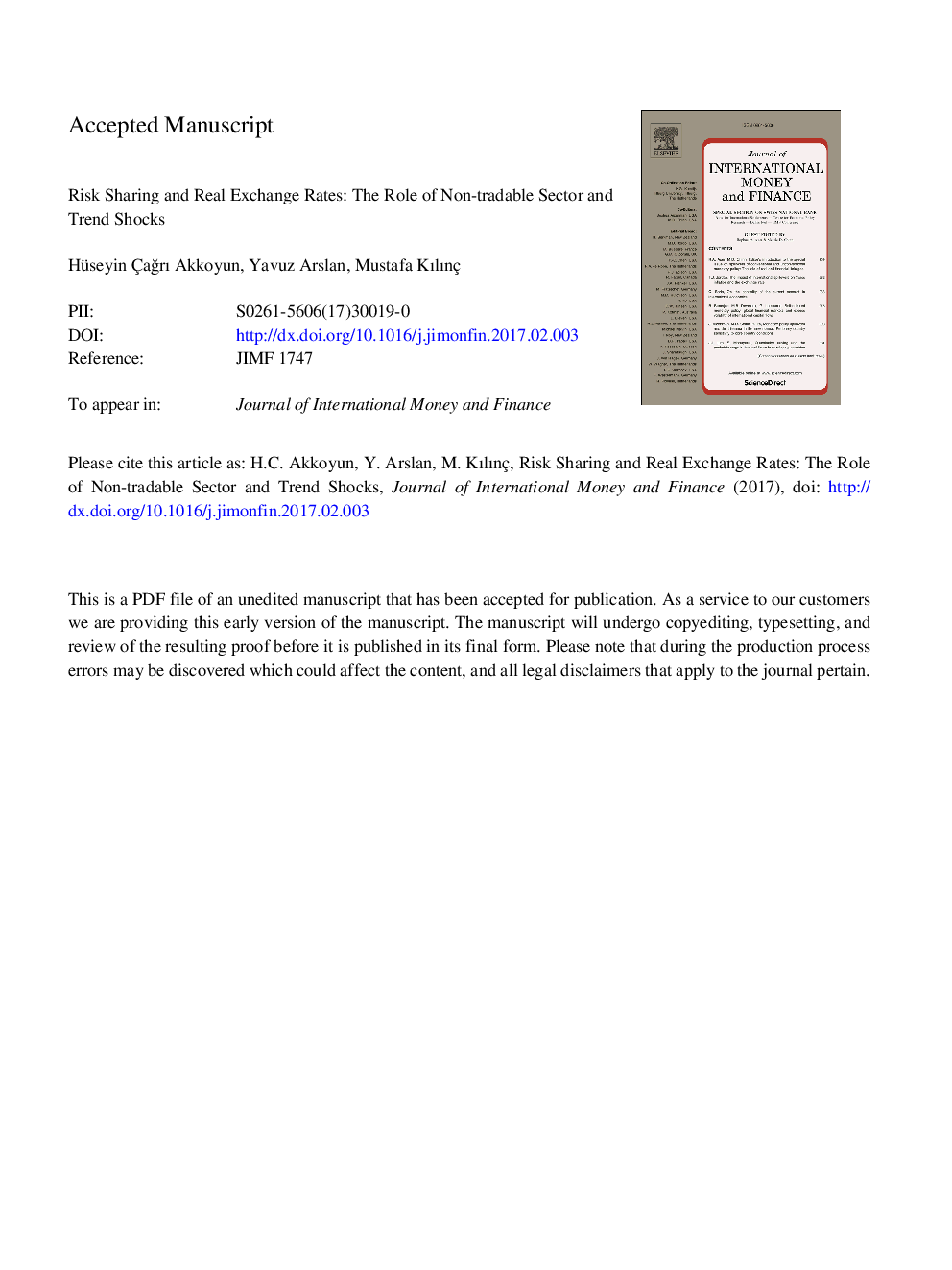| Article ID | Journal | Published Year | Pages | File Type |
|---|---|---|---|---|
| 5101167 | Journal of International Money and Finance | 2017 | 36 Pages |
Abstract
In this paper, we show that the tradable and non-tradable total factor productivity (TFP) processes of the US and Europe have unit roots and can be modeled by a vector error correction model (VECM). Then, we develop a standard two-country and two-good (tradable and non-tradable) DSGE model. Our model implies that using cointegrated TFP processes and including non-tradables help solve the real exchange rate (RER) volatility and risk sharing puzzles. Cointegrated TFP shocks, or trend shocks, generate significant income effects and amplify the mechanisms that produce high RER volatility. Moreover, trend shocks can break the tight link between relative consumption and RER for low and high values of trade elasticity parameters. The non-tradable sector in the model improves the results for the risk sharing significantly.
Related Topics
Social Sciences and Humanities
Economics, Econometrics and Finance
Economics and Econometrics
Authors
Hüseyin ÃaÄrı Akkoyun, Yavuz Arslan, Mustafa Kılınç,
